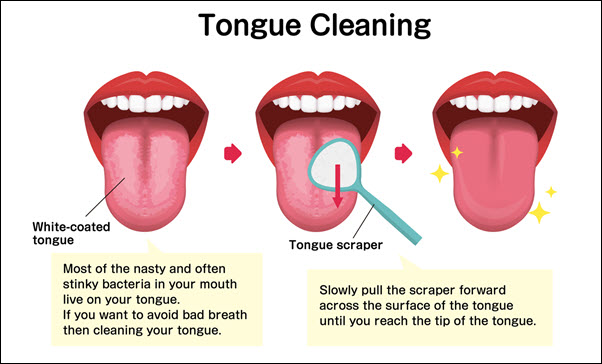Oral Health: The Story Your Tongue Tells
For most, dental health comprises brushing, flossing, and dentist visits. And, for the most part, this is correct. But another aspect of oral health that many give little thought to is the tongue. Sure, the tongue is crucial to speaking, but how often do you take time to brush your tongue?
The tongue is an important part of your dental health. In addition to an oral cancer screening, they’re checking for other things as well. Beyond speaking, the tongue affects your teeth, gums, palate, and breath. Consider this: When you eat or drink, bacteria remain in the mouth. Not only in the crevices of teeth but on those of the tongue. However, those crevices make perfect hiding spots for bacteria. With that in mind, it is vital that you always brush your tongue whenever you brush your teeth. An added benefit of brushing your tongue is a lower risk of bad breath.
You may have noticed whenever you go to the dentist, your dentist will take a minute to check your tongue. They will lift it and move it left and right and perhaps ask if you have any questions or concerns. This is because the tongue can indicate several health issues.

Common Concerns for Tongue and Oral Health
- Coating or Discoloration – A healthy tongue is pink in color. But if your tongue looks yellow, white, or black, it may signal poor oral hygiene, a fungal infection, or dehydration.
- Strange Texture – Your tongue’s crevices create a unique texture, neither exceptionally smooth nor extremely bumpy. So, if your tongue becomes smooth and glossy, it is an indicator that you need to improve your diet. Vitamins and minerals that promote tongue health include Vitamin B complex, Vitamins A, C, and D, calcium, magnesium, and zinc. If your tongue is bumpier or has irregular patches, it could be geographic tongue. Geographic tongue often appears as map-like patches on the tongue’s surface. It is associated with psoriasis or autoimmune disorders.
- Burning Tongue – This is sometimes caused by eating or drinking something very acidic or hot. However, if the burning persists, it may indicate a nervous system issue, acid reflux, dry mouth, or diabetes.
- Wavy or Rippled Edges – Sometimes referred to as a scalloped tongue, this is when the side of the tongue has a wavy appearance. It is often caused by teeth grinding, clenching, or swelling as a result of TMJ, sleep disorders, anxiety, and dehydration. Once the dentist has determined the cause, treatment will be prescribed.
- Sores and Lesions – These can be signs of dry mouth, oral cancer, or other health concerns. And while canker sores or small red bumps may heal with time, don’t ignore them. Contact your dentist if the bumps remain, get larger, or cause pain.
Be sure to do your part to promote your oral health. You can prevent many of the concerns listed here by consistent oral care. If you have questions regarding tongue health or other oral care concerns, our team is here to help. Reach out to Myshin, Kravitz & Miller today to make an appointment.




